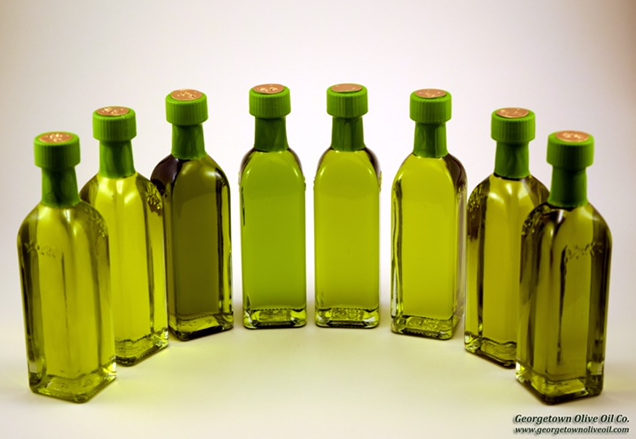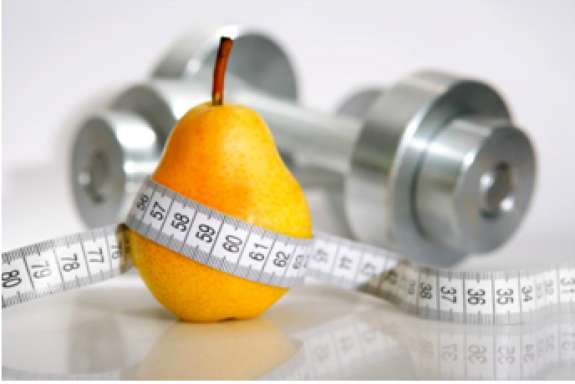Isolated? The Power of Music
- At March 14, 2020
- By Katherine
- In Articles, News
 2
2
As I was (virtually) meeting my clients this week, I realized that, by now, home life could be pretty chaotic if we haven’t come up with solutions so we can all stay healthy – and sane.
First, the psychological: Our frame of mind forms the foundation of our responses and our ability to cope. For instance, taking the high road by helping each other as much as possible (instead of playing the blame game). Understanding: We’re all in this together! Not just our families, our communities, our schools, sports, businesses, but the world.
 Italians really know how to make the best of any situation: I just enjoyed some video clips of quarantined Italians singing joyfully together from their apartment balconies (picture a scene in the classic Hitchcock movie, “Rear Window”). Even an opera singer was serenading her neighbors with an aria. What spirit! I have a vision of my neighbors and I singing from our windows and front stoops. Hmmm… What aria will we bellow out to each other?
Italians really know how to make the best of any situation: I just enjoyed some video clips of quarantined Italians singing joyfully together from their apartment balconies (picture a scene in the classic Hitchcock movie, “Rear Window”). Even an opera singer was serenading her neighbors with an aria. What spirit! I have a vision of my neighbors and I singing from our windows and front stoops. Hmmm… What aria will we bellow out to each other?
I’m serious. Soprano Renée Fleming and the National Institutes of Health teamed up to research the effects of music on the brain. Does music soothe the savage beast? The initiative is called “Sound Health: An NIH-Kennedy Center Partnership.” Some initial scientific findings:
- Music helps brain networks mediate emotion, relieve stress and help treat depression,
- Musical training can foster the development of a variety of nonmusical

Sound Health: NIH & Kennedy Center Team Up to Explore Music & The Brain. Soprano Renée Fleming, CNN’s Sanjay Gupta, NIH Director Francis Collins
skills in children,
- Music therapy can help childhood cancer patients cope with the stress of treatment,
- Music may help relieve pain, including its impact on several brain circuits and pathways, and
- Musical activities benefit the aging brain, including promising applications in people with Parkinson’s disease, stroke, or dementia.
I don’t know about you, but I’m CALLING ALL NEIGHBORS!
Four Tips for Choosing the RIGHT Olive Oil
My clients regularly ask me how important using olive oil is. Of course, we have all heard about olive oil’s health benefits. But there is still understandable confusion. I’m regularly asked, “How does olive oil compare to other oils? How does it work? What kind of olive oil is best? How much should I use?” My answer: It depends…
These are important questions as more and more science is finding that the nutrients in olive oil, called “polyphenols,” are responsible for its superior health benefits. Increased longevity, reductions in cardiovascular disease, metabolic syndrome, obesity, diabetes, and various cancers, are among the benefits, confirmed a 2015 review of studies published in the British Journal of Nutrition. But olive oils can vary significantly in their polyphenol content. There are four times more phenolic compounds in high quality extra virgin olive oil versus low quality or refined olive oil – 232 mg vs 62 mg per kilogram of oil – so it is important you choose the right olive oil.
“99 percent of olive oil’s health benefits are related to the presence of the phenolic compounds, not the oil itself,” said Nasir Malik, NIH Scientist. “And without the polyphenols, you might as well use the less expensive canola oil.”
Surprisingly, when tested by the U.S. Department of Agriculture, polyphenols were low in most commercially available olive oils. They also didn’t live up to international quality standards defining extra virgin olive oil. These standards require an acidic pH, necessary to protect the nutrients. And the olive oils’ pH had degraded – even in the highest end gourmet shops – according to studies conducted at the University of California at Davis Olive Center.
That’s because olive oil’s polyphenol content diminishes, and its acidic pH degrades over time, as days, weeks, and months go by after harvest. Other factors play a role, too: the harvesting methods, the age of the trees, the ripeness of the olives, the processing, and the storage. Since time, heat, and light affect polyphenol content, choose olive oil that:
- Is no more than one year old (look for the harvest date on the label),
- Is in an air-tight, dark glass, or tin container,
- Is stored in a cool environment, and
- Smells and tastes like olives, which could be fruity, grassy, or peppery.
Is olive oil better for your health than other oils? The answer is yes, according to a new study in Nutrition & Diabetes. For one, “The risk of type 2 diabetes reduced by 13% with increasing intake of olive oil up to 15 to 20 grams per day (3 to 4 teaspoons),” according to the study. When refined olive oil, or other oils, were compared, fresh extra virgin olive oil was more beneficial for the prevention and management of diabetes. It was associated with lower fasting blood glucose, and Hemoglobin A1C, a three-month average of blood glucose and an important marker for diabetic complications.
Other studies have found high polyphenol olive oil improves health in many ways:
- Increasing levels of good cholesterol (which helps clear artery-clogging fat from the bloodstream),
- Improving artery wall health and functioning (important for healthy blood pressure, blood flow, reducing blood clots, and the risk of cardiovascular disease), and
- Reducing oxidation and inflammation processes involved in many diseases from infections to cancer.
To take full advantage of your olive oil’s flavor and health benefits, save your recently harvested, high quality extra virgin olive oil for drizzling on vegetables, salads, or anything! When cooking with high heat, i.e., stir frying, use canola oil or nut oils instead, as they can be less expensive, and have higher smoking points so can tolerate higher temperatures without burning.
My favorite vinaigrette: Mix 1 or 2 tablespoons of olive oil with 1 or 2 tablespoons of freshly squeezed lemon juice, salt and pepper. The proportion of olive oil to lemon juice depends on how tart you like your vinaigrette. You can also add a smidge of mustard or herbs. Serve!
One shop in Georgetown which consistently sells high quality olive oils is Georgetown Olive Oil company. It is locally owned and operated at 1524 Wisconsin Avenue. The shop displays rare-to-find information, such as the oils’ date of harvest, provenance, and detailed descriptions. And you can taste any of the oils at any time. I highly recommend this cozy and friendly specialty shop where they clearly understand what makes a great olive oil!
For more detailed information on olive oil, read my Washington Post article: “Most Olive Oil is not as Healthful as You Think”
8 Steps to Determine: Are YOU Dangerously Overweight?
- At August 12, 2013
- By Katherine
- In Articles, News
 0
0
My clients regularly ask me: Could the height/weight charts in doctors’ offices be correct?
Really?
My answer: That depends…
(This article was also published in The Huffington Post)
Don’t use height/weight charts alone to determine your ideal body weight. Researchers designed the latest body mass index (BMI) charts for use in combination with additional personal information. A group of scientists from the National Institutes of Health (NIH) who specialize in how weight affects health crafted the guidelines after reviewing hundreds of studies conducted over the past several decades — only then did the experts make their recommendations to health professionals.
The guidelines help physicians, and registered dietitians like me, evaluate and make recommendations for clients. But you can also use the BMI charts, along with your doctor’s advice, to help you decide what your appropriate weight should be.
8 Steps
- Determine your Body Mass Index (BMI), or the relationship between weight and height that researchers have associated with body fat and health risk. BMI is calculated by dividing your weight in kilograms by height in meters squared (kg/m2). But there is a BMI chart (below) so you don’t have to make the calculation yourself!
- If you are categorized as “overweight,” it is ideal for you to lose weight. That said, weight loss treatment is particularly important – and recommended – when you have two or more health risk factors, such as smoking, inactivity. I would define “inactivity” as under 10,000 pedometer steps daily (averaged over a week), or any of the following: High blood pressure, low HDL (good) cholesterol, high LDL (bad) cholesterol, high triglycerides (blood fat), impaired fasting glucose, a family history of premature heart disease, or a high waist circumference – measured at the belly button – of greater than 35″ for women or 40″ for men. The presence of abdominal fat is correlated with disease risk. We used to think body fat was inert, but it isn’t, it’s toxic! Fat tissue produces hormones and pro-inflammatory chemicals, which regulate metabolism, the immune system, inflammation, the progression of artery hardening, and the development of cancers, so that when you have less body fat, you get many biological benefits.
- If you are categorized as “obese,” weight loss treatment is recommended,
- Your initial weight loss goal should be to reduce body weight by about 10% from your starting weight. This should take about six months, depending on how much you have to lose. You can lose one-half to three pounds per week safely (assuming your calorie intake is appropriate, the more cardiovascular exercise you do, the faster you can lose),
- If more weight loss is needed, another attempt at weight reduction can be made,
- After the desired weight loss is achieved, a weight maintenance program consisting of dietary therapy, physical activity, and behavior therapy should be continued indefinitely,
- You will need to follow lifestyle therapy for at least six months, according to the NIH guidelines, before your doctor prescribes drug therapy or surgery. Though the safety of drug therapy has not been established and 50% of surgery patients re-gain the weight,
- For the very obese, with a BMI over 40, or a BMI over 35 with significant adverse health conditions, obesity surgery may be an appropriate option.
NOTE: Highly muscular people, usually professional athletes or body builders, may register as “overweight,” but that may be because of high muscle mass, instead of fat. More muscle is not generally thought of as unhealthy, so if you’re categorized as “overweight” because you have more muscle, weight loss would not be recommended in these cases.
Harvard Study: Fruit Reduces Diabetes Risk
- At March 19, 2012
- By Katherine
- In Articles, News
 0
0
-
- Swedish Strawberries (Photo: Swedish Embassy)
People are always asking me if fruit is too high in sugar to eat, especially if you have diabetes. This fear of fruit, I believe, is leftover from the Atkins craze, making foods like fruits, and even vegetables like carrots, verboten. This is one of the most tragic consequences of this diet fad, because avoiding fruit can actually damage your health.
People who eat fruit have a lower incidence of Type 2 Diabetes, the most common form of the disease, according to a recently published Harvard study. But this study isn’t alone in its conclusions. It corroborates decades of research showing the nutritional value and health benefits of fruits.
Fruit is high in water content and fiber, which help you feel full with fewer calories. Even though it contains simple sugars and carbohydrates, most fruits have a relatively low glycemic index, that is, when you eat it, your blood sugar raises only moderately, especially when compared with refined sugar or flour products.
Fruit is loaded with nutrients scientists believe protect people from major chronic diseases such as heart disease, cancer, type 2 diabetes, and more. The potassium in fruit helps lower blood pressure and actually helps neutralize the blood pressure-raising affects of sodium.
Eating more fruits and vegetables – as high as 5 cups per day or more – is a habit which could help you stabilize and even reverse Type 2 Diabetes. Yes, it is possible!
And, the best part of fruit? It’s delicious! It’s easy to eat, to pack in your lunch box for the office or school, and it’s such a refreshing snack or dessert. What could be better?
Dietary flavonoid intakes and risk of type 2 diabetes in US men and women
Nicole M Wedick, An Pan, Aedín Cassidy, Eric B Rimm, Laura Sampson, Bernard Rosner, Walter Willett, Frank B Hu, Qi Sun, and Rob M van Dam
From the Departments of Nutrition, Epidemiology, and Biostatistics, Harvard School of Public Health, Boston, MA; Channing Laboratory, Department of Medicine, Brigham and Women’s Hospital and Harvard Medical School, Boston, MA; the Department of Nutrition, Norwich Medical School, University of East Anglia, Norwich, United Kingdom; and the Departments of Epidemiology and Public Health and Medicine, Yong Loo Lin School of Medicine, National University of Singapore, Singapore.
Supported by NIH grant from the National Heart, Lung, and Blood Institute.
Abstract
Background: Data from mechanistic studies support a beneficial effect of specific flavonoids on insulin sensitivity. However, few studies have evaluated the relation between intakes of different flavonoid subclasses and type 2 diabetes.
Objective: The objective was to evaluate whether dietary intakes of major flavonoid subclasses (ie, flavonols, flavones, flavanones, flavan-3-ols, and anthocyanins) are associated with the risk of type 2 diabetes in US adults.
Design: We followed up a total of 70,359 women in the Nurses’ Health Study, 89,201 women in the NHS II, and 41,334 men in the Health Professionals Follow-Up Study who were free of diabetes, cardiovascular disease, and cancer at baseline.
Results: During 3,645,585 person-years of follow-up, we documented 12,611 incident cases of type 2 diabetes. Higher intakes of anthocyanins were significantly associated with a lower risk of type 2 diabetes after multivariate adjustment for age, BMI, and lifestyle and dietary factors. Consumption of anthocyanin-rich foods, particularly blueberries and apples/pears, was also associated with a lower risk of type 2 diabetes. No significant associations were found for total flavonoid intake or other flavonoid subclasses.
Conclusion: A higher consumption of anthocyanins and anthocyanin-rich fruit was associated with a lower risk of type 2 diabetes.
Mindfulness in Eating and Living
- At January 09, 2011
- By Katherine
- In Articles, News
 1
1

Mindfulness Through Yoga – Katherine doing a side plank
“There are many health benefits to being more mindful,” says Jack Killen, MD, Deputy Director of the National Institutes of Health’s National Center for Complementary and Alternative Medicine.
Meditation – and similarly centering prayer – for the religious among you, establishes pathways in the brain which improve impulse control, helping you work through problems and decisions more effectively. This simple, yet powerful, tool can transform your health and your life as it helps you make the decisions you need to make your life more satisfying, for instance, decisions about eating and exercise can be done more thoughtfully and purposefully..
In the Diet Simple chapter, “How to Beat Emotional Eating,” I give you a step-by-step guide to understanding how your feelings influence your eating.
The following are excerpts from a recent interview with Jack Killen explaining how meditation works to help you regulate your emotions, so you can reign them in to make healthier decisions for your long-term benefit:
Katherine: What is mindfulness?
Dr. Killen: Mindfulness is the ability to be present, more focused, and clear; for concentration to be more sustained, and for attention to be on what’s happening, instead of on thoughts, memories, and associations.
Katherine: Why is it important to be mindful? What are some scientifically proven benefits?
Dr. Killen: There is neurobiological research demonstrating that mindfulness engages pathways in the brain associated with emotion and impulse control, attention, and focusing. It allows your brain to be focused on what is here and now so you are better able to respond to situations appropriately. People who are more mindful are better able to handle emotional situations in more appropriate ways, are more able to think through a problem, are less likely to be distracted by issues that won’t help… There is evidence that you improve at mental tests, that emotion regulation is better and more appropriate, blood pressure is lower, stress hormones are lower, thereby reducing stress.
Katherine: How can one become more mindful? I understand prayer or meditation may be helpful?
Dr. Killen: There is a lot of evidence accumulating that meditation in all of its forms has beneficial physiological effects. Meditation is a way of exercising neurological pathways in the brain which help us become more mindful. But it is a bit like going to the gym and working out your muscles. It takes time and practice for the beneficial brain pathways to become established, similar to building muscular strength and flexibility.
Katherine: What are some examples of meditation which may have these kinds of emotional and behavioral benefits?
Dr. Killen: There are many ways you can train your mind to be more mindful. The jury is still out as to whether one is better than another. More likely, certain types of meditation will work well for certain people, and other kinds for other people. We are still working on how to measure and study meditation.
There are several types of meditation. “Mantra” meditation is repeating a phrase, or something with deep meaning over and over, or focusing on a candle, for instance. “Mindfulness” meditation is focusing on what is happening now instead of on thoughts, memories, and associations.
Katherine: Are yoga, tai chi, and other forms of exercise considered good ways to achieve mindfulness?
Dr. Killen: While mind/body interventions are difficult to research, there are some encouraging data. Yoga and meditation are intertwined in many ways. Studies suggest yoga is useful in increasing lung capacity, improving mood, well-being, posture, and there are similar benefits with Tai Chi. But there is a larger body of research on meditation and its benefits.
Katherine: Is there scientific evidence that these mind/body interventions such as meditation or yoga will promote healthier lifestyles?
Dr. Killen: This is what we are studying at the Center for Complementary and Alternative Medicine. Getting definitive answers to those questions through rigorous scientific research could make these kinds of health interventions more widely available. Important work going on right now is defining research methods. We need to understand, for instance, which yoga postures (“asana”) benefit your health and in what specific ways? If we want to make health interventions more widely available and accepted, we need to be able to describe their effects better, thus magnifying their benefits. We are currently studying if these mind-body interventions are a means to help people with metabolic syndrome, if they’d be useful in weight-control programs, helping people eat less, or more healthfully.















